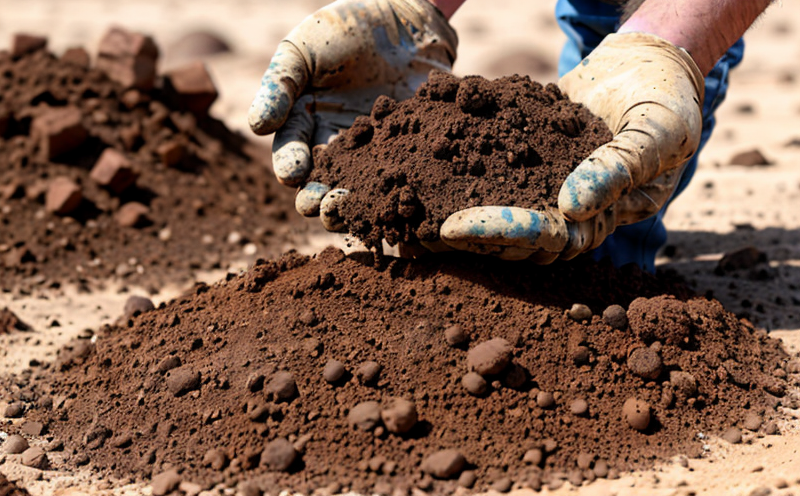BS 1377 Part 10 California Bearing Ratio CBR Testing
The BS 1377 Part 10 test, commonly known as the California Bearing Ratio (CBR) test, is a fundamental soil engineering test used to evaluate the load-bearing capacity of subgrade soils. This method assesses how much a particular soil can withstand under compression before failure occurs. The CBR value provides insight into whether the soil will support specified loads, making it indispensable for road construction, pavement design, and other civil engineering projects.
In mining contexts, particularly in the preparation of mine roads and access ways, understanding the load-bearing capacity of subgrade soils is essential to prevent structural failures. The CBR test helps ensure that the materials used can safely support heavy equipment, vehicles, and future construction. This testing method ensures compliance with international standards like BS 1377, which is widely recognized in Europe.
The CBR test involves compressing a soil sample under progressively increasing loads until it reaches its point of failure. The ratio between the load applied at this point of failure and a standard load (typically 250 kPa) for a reference material determines the CBR value. This value is critical for selecting appropriate materials to construct stable subgrade layers.
The accuracy and precision of the test are paramount, especially in mining where structural integrity can significantly impact safety and operational costs. By adhering strictly to BS 1377 Part 10, laboratories ensure that results are reliable and comparable across different projects and regions.
For quality managers and compliance officers within mining organizations, the CBR test is a cornerstone of soil management practices. Ensuring that soils meet specified CBR values helps in reducing risks associated with structural failures and ensures adherence to regulatory standards. R&D engineers can use these tests to optimize construction materials for specific environmental conditions.
The testing process typically involves several steps: soil sampling, preparation, compression under load, and measurement of the point of failure. The specimen is usually prepared by mixing a representative amount of soil with water in precise proportions and allowing it to settle before compression testing. This method ensures that the test accurately reflects the properties of the natural soil.
The equipment used for CBR testing includes a loading frame, hydraulic jack, anvils, and strain gauges to measure deformation under load. The use of calibrated instruments is crucial to ensure accurate results, which in turn supports informed decision-making during project planning and execution.
Applied Standards
| Standard | Description |
|---|---|
| BS 1377 Part 10 | This standard provides comprehensive guidance on the California Bearing Ratio (CBR) test. It specifies the procedures for determining the CBR value of soil specimens, including sample preparation, loading conditions, and acceptance criteria. |
Scope and Methodology
The BS 1377 Part 10 CBR test is applicable to a wide range of soils, including clay, silt, sand, gravel, and mixtures thereof. The scope includes the determination of the CBR value for soil samples that will be used in subgrade construction or pavement design.
- Sample preparation involves sieving, mixing with water, and allowing the mixture to settle before compression testing.
- Loading is performed using a hydraulic jack, applying loads at regular intervals until failure occurs.
- The point of failure is determined by measuring the deformation under load. The CBR value is calculated as the ratio of the load at failure to 250 kPa for a standard material.
Acceptance criteria specify that the CBR value must meet or exceed the required design specifications. This ensures that the subgrade soil can safely support the intended loads without failure.
Why Choose This Test
- The BS 1377 Part 10 CBR test is internationally recognized and widely used in civil engineering projects, including mining applications.
- It provides a reliable method for determining the load-bearing capacity of subgrade soils, essential for ensuring structural integrity.
- The standard offers clear guidelines on sample preparation, loading conditions, and acceptance criteria, ensuring consistent results.
- CBR testing supports compliance with international standards, enhancing confidence in project outcomes.
- It helps in selecting appropriate materials to construct stable subgrade layers, reducing the risk of structural failures.





